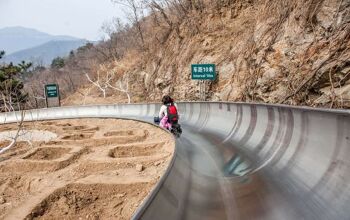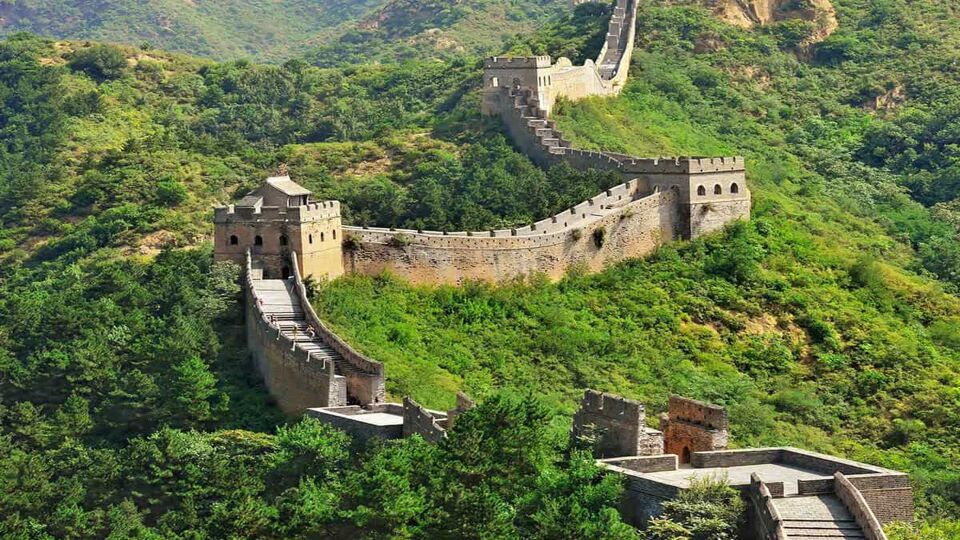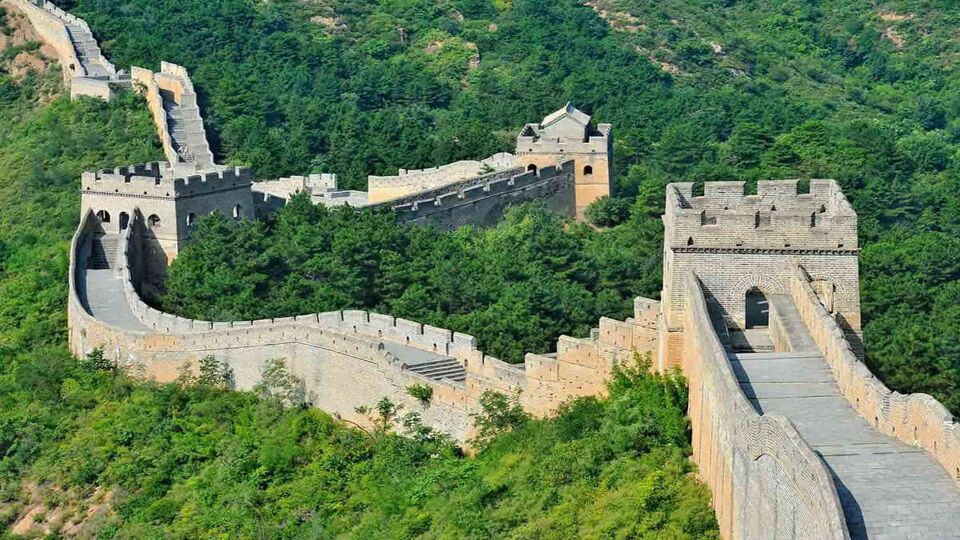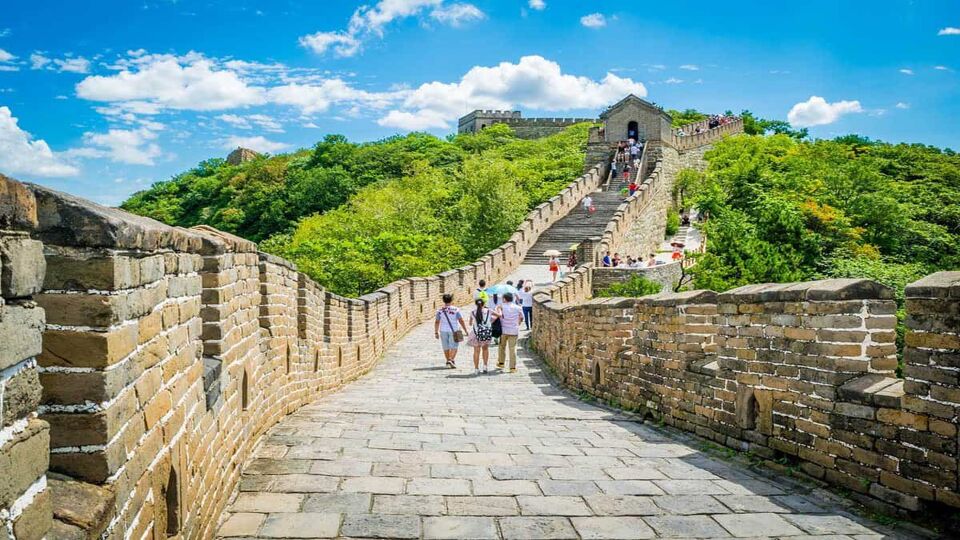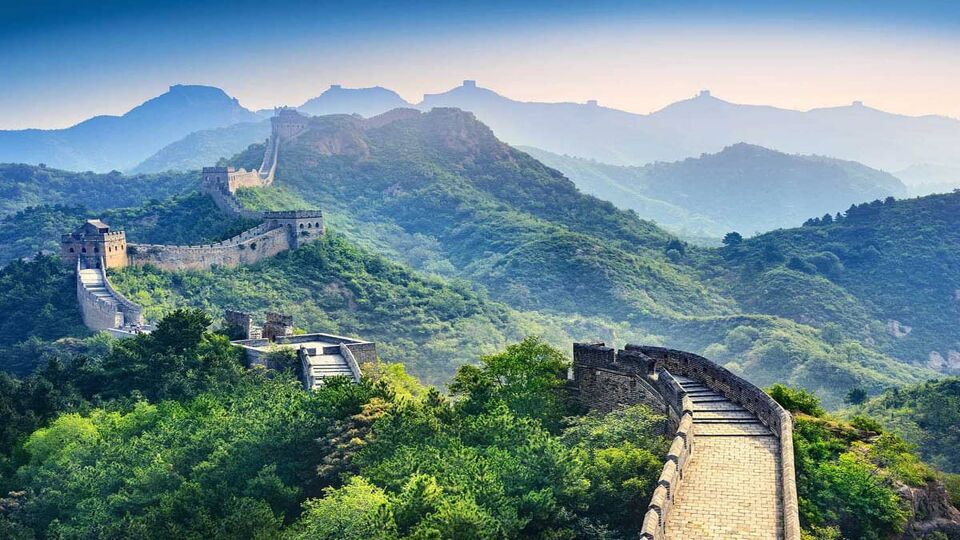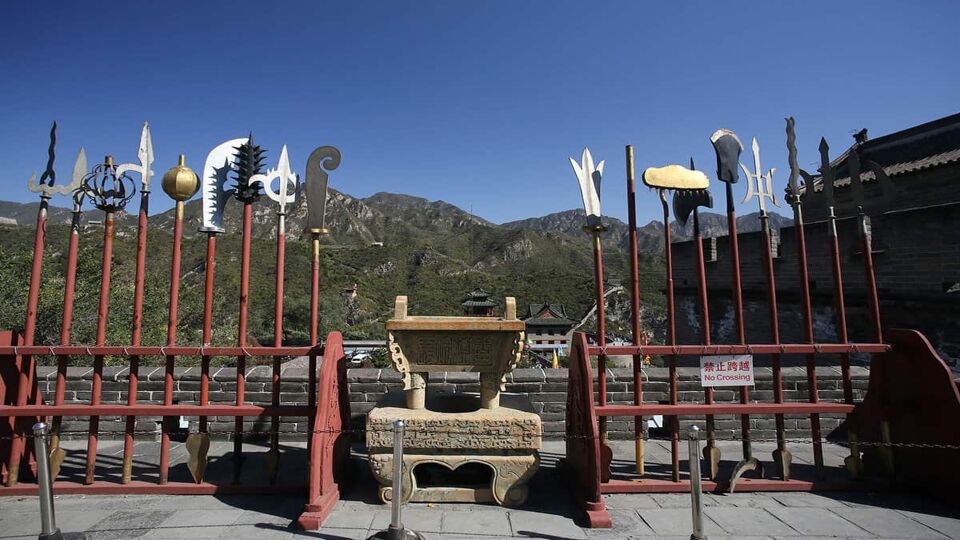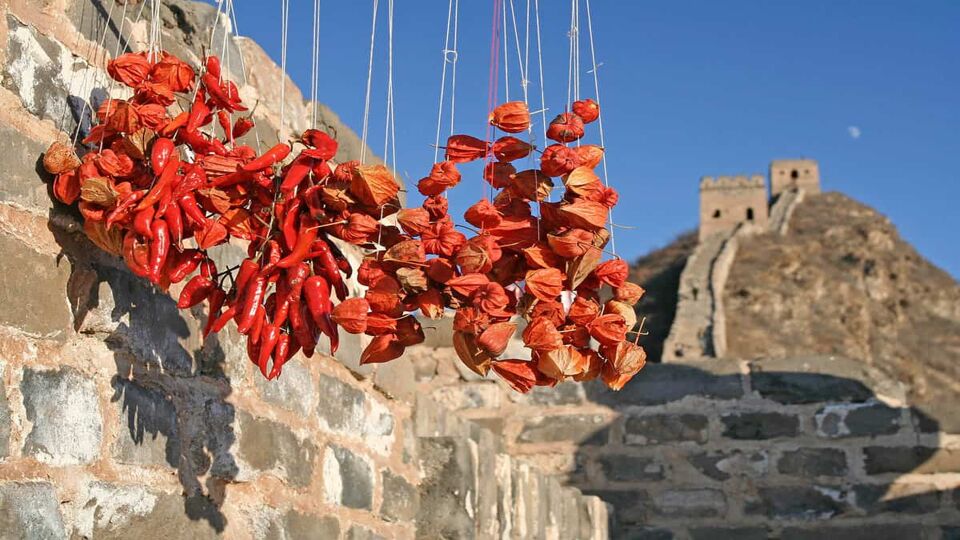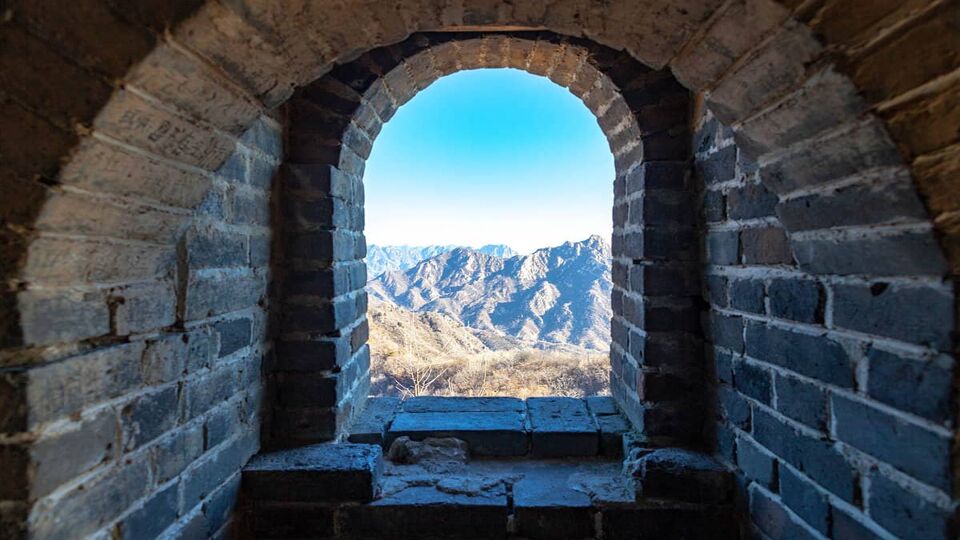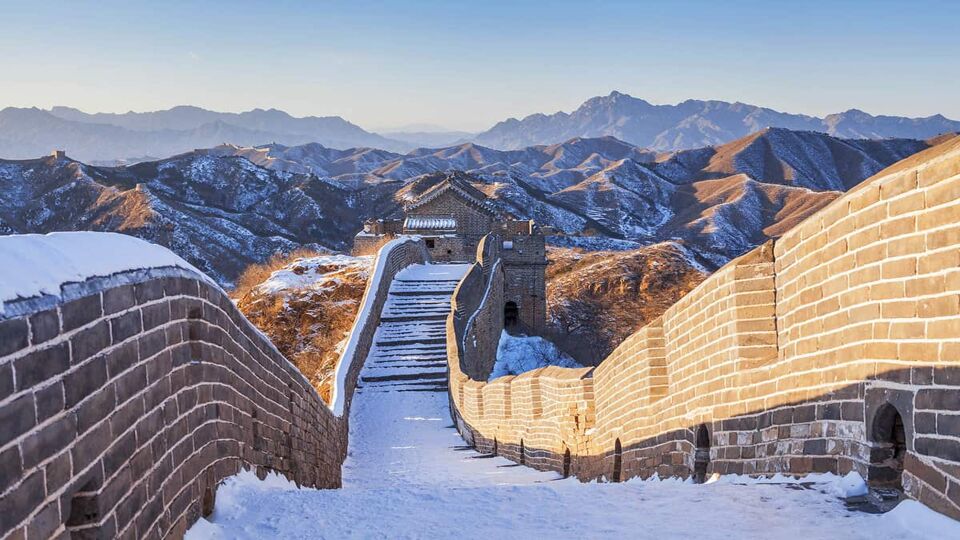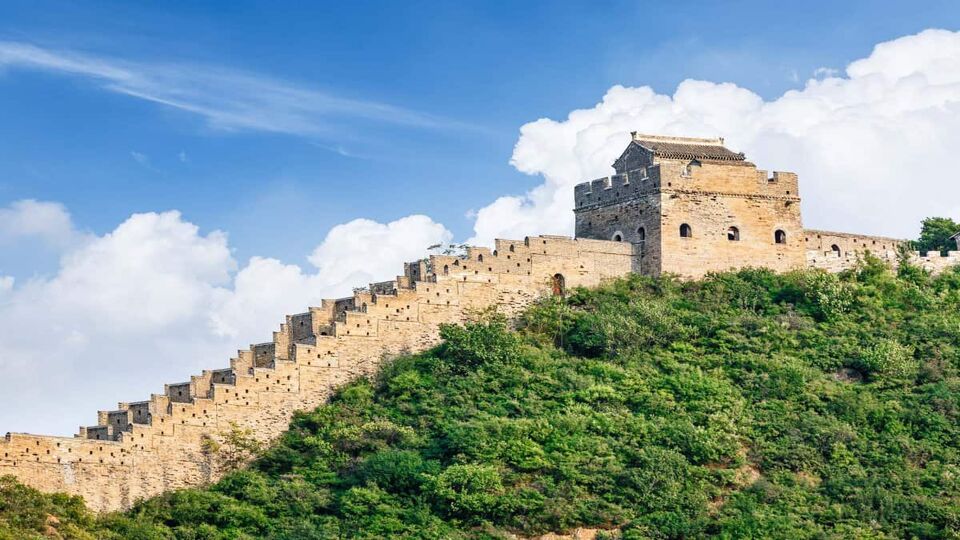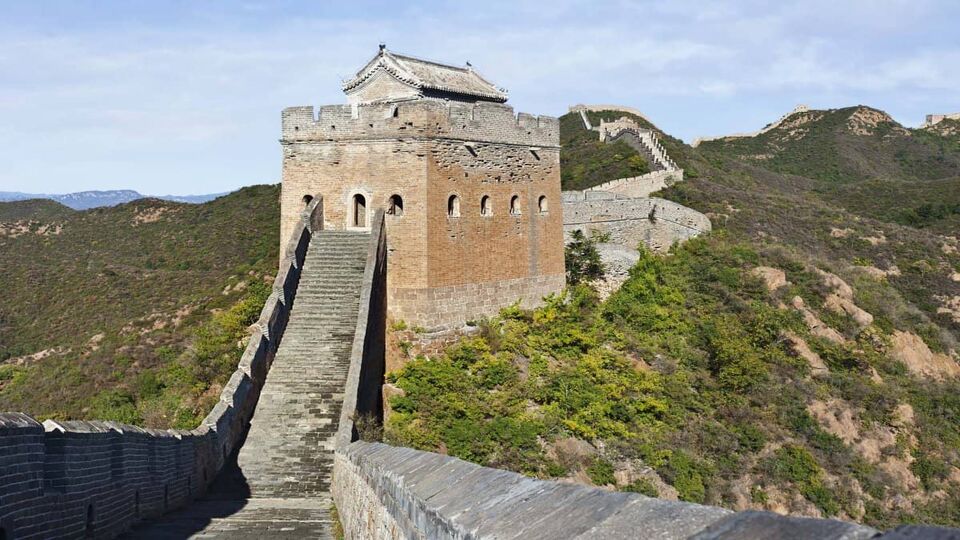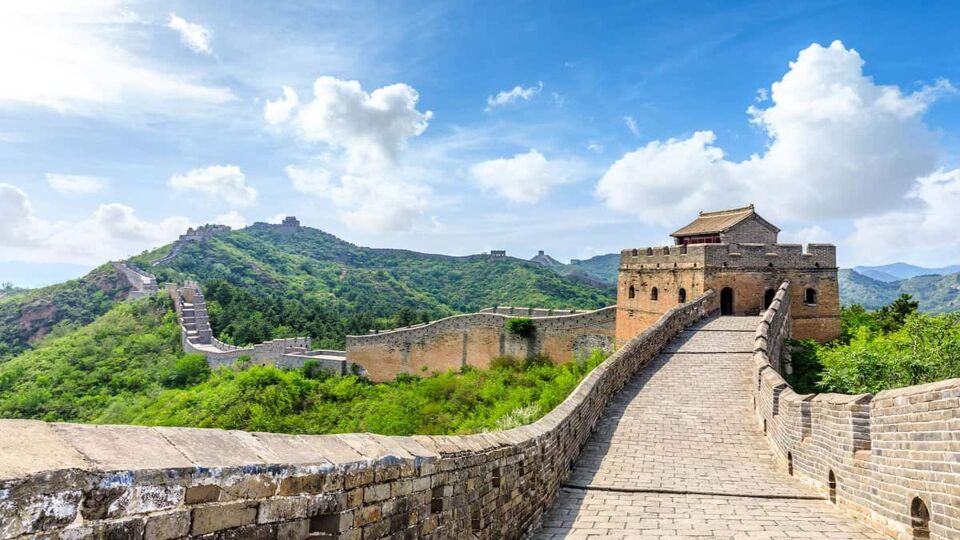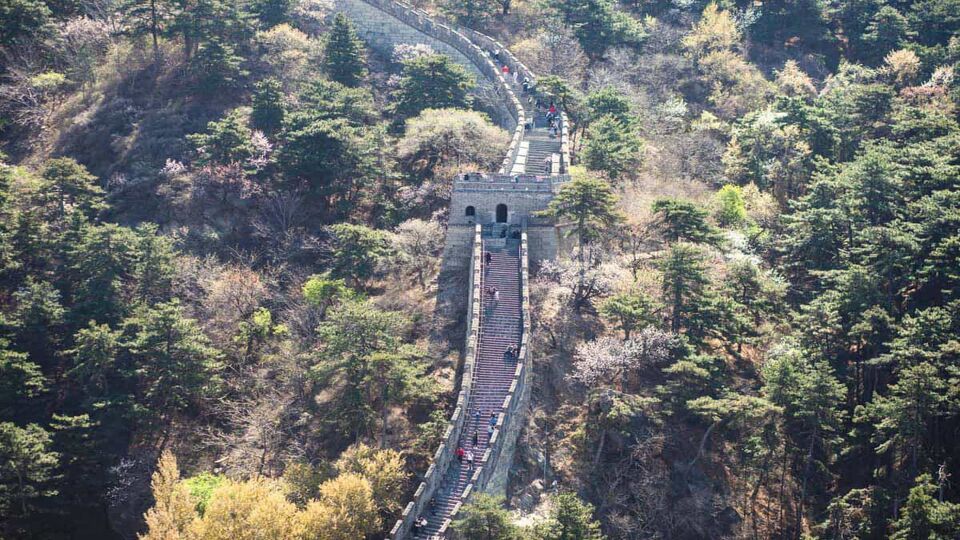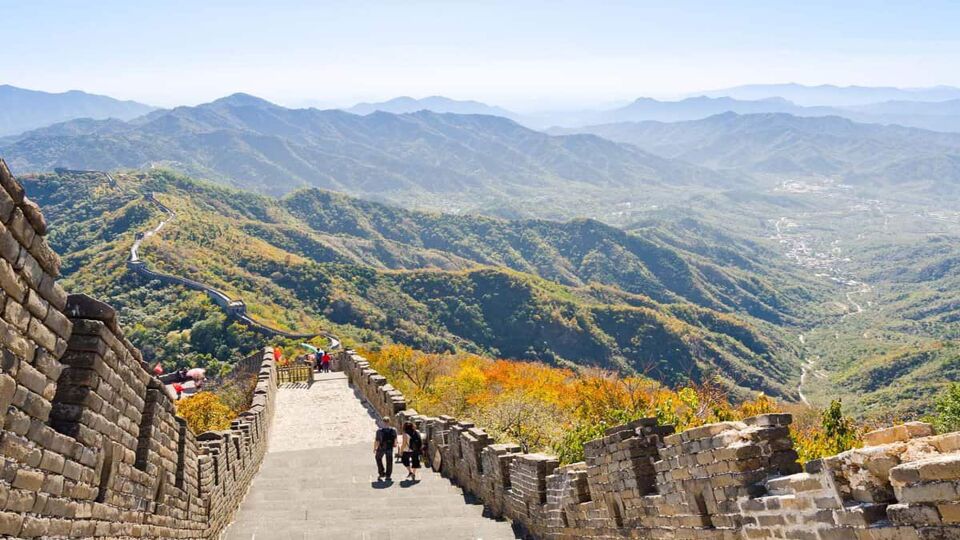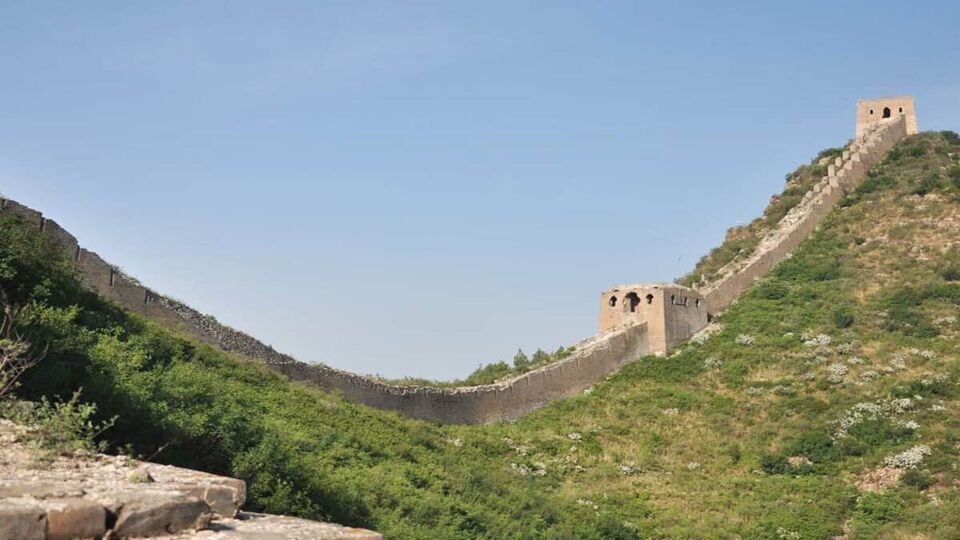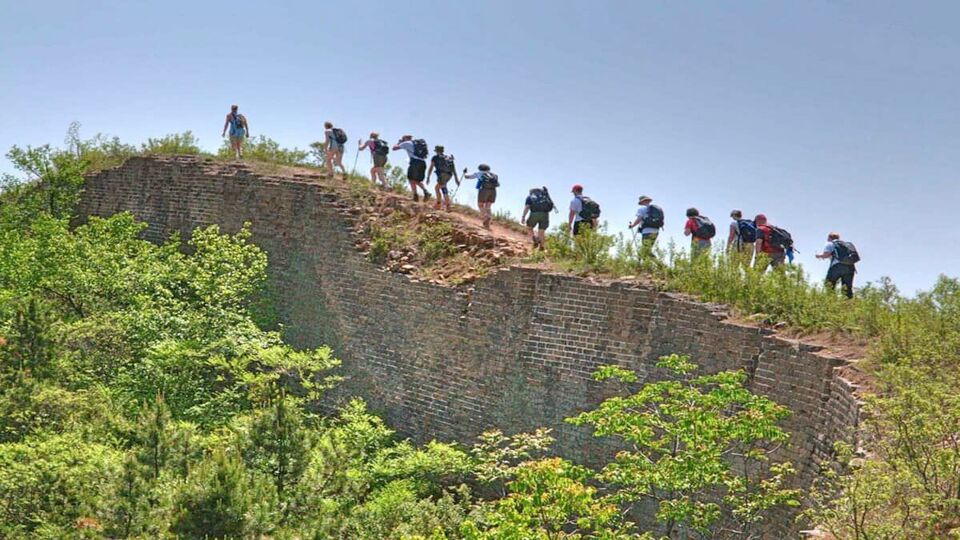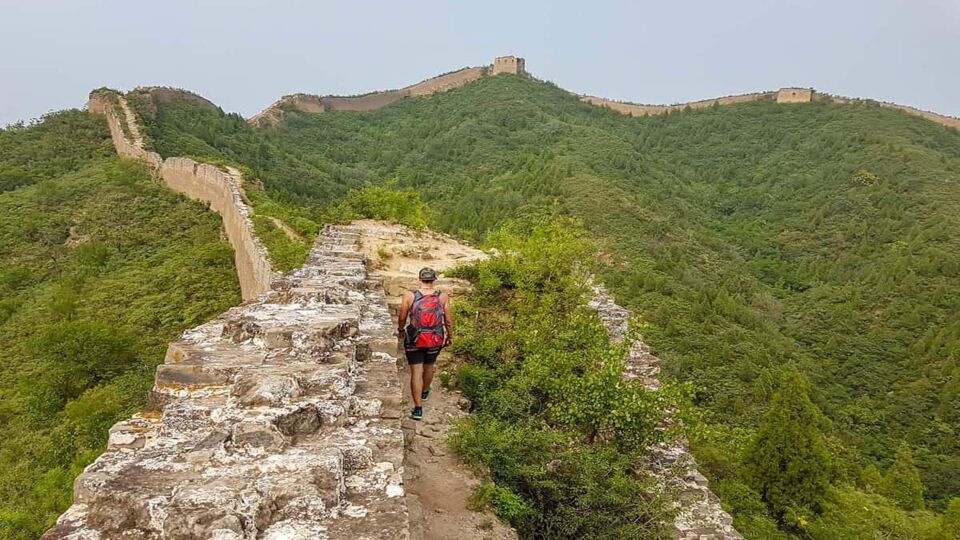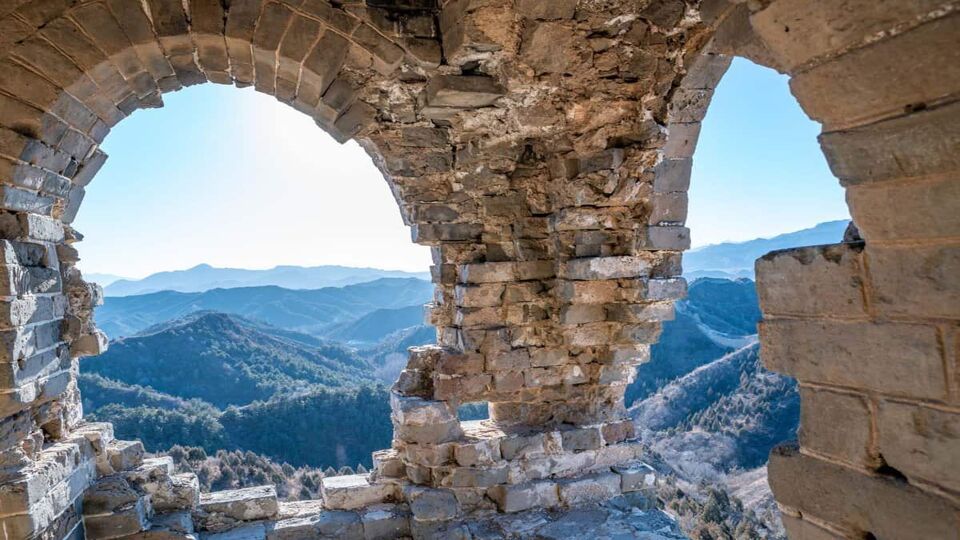Last updated: 18 March, 2024
The monumental Great Wall of China is a defense work stretching from ocean to desert across the vast expanse of China’s northern regions. In the strategic uplands around Beijing, the Wall was built from bricks and stone, with crenelated battlements and watchtowers. Elsewhere it was more simply fashioned from tamped earth.
The Great Wall is actually a series of walls built during different eras of Chinese history, but the first unifying wall was constructed by China’s first emperor, Qin Shi Huang, from around 220 BC. Much of the wall that remains standing today was reconstructed using stronger materials during the Ming Dynasty (1368-1644).
Later sections of the Great Wall – including Badaling, the first section to be opened to tourists – stand on average 8m tall and just under 6m wide, designed to allow five horses to ride abreast or ten soldiers to walk shoulder to shoulder.
The nearest stretches to Beijing have been restored and are now among the world’s most visited tourist spots. Unrestored sections, sometimes called the ‘wild wall’, remain in a precarious state of ruin, with an estimated thirty percent already lost to the vagaries of weather, earthquakes and human activity. Around Beijing, the undulating mountain landscapes are as inspiring as the defensive ramparts themselves.
Much of the Great Wall is remote and inaccessible, but certain, unrestored stretches of the ‘Wild Wall’ can be accessed with special guided excursions. William Lindsay OBE, author of several Great Wall books, organises ‘Wild Wall Weekends’ from his family courtyard in a rural village close to the Jiankou section of Great Wall. Full-board stays include guided hikes and the chance to see the sunrise from the battlements.
For one-day Wild Wall hikes that depart from and return to the city, check out the long-established Beijing Hikers, who post a regularly updated calendar of group excursions on their website.
